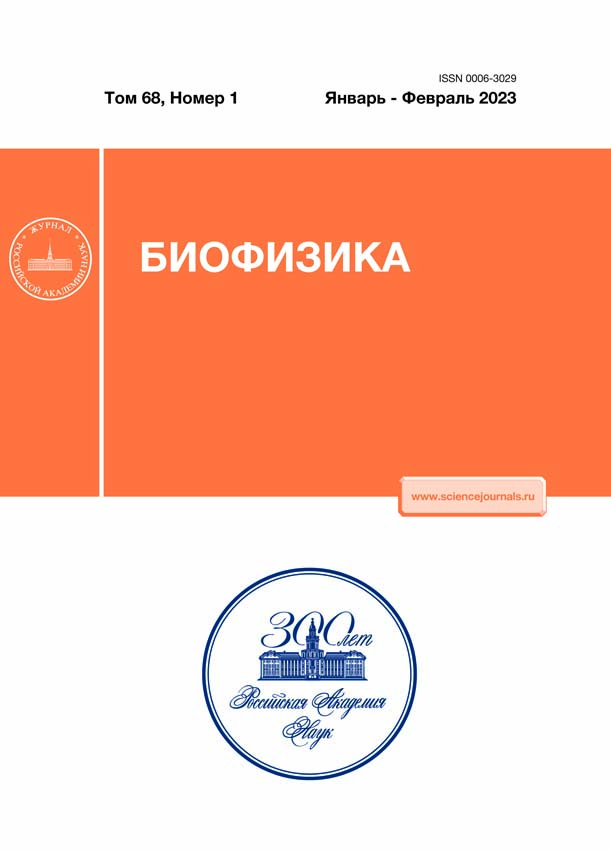Analysis of multifractality of various components of electroencephalograms in mental disorders
- Autores: Dick O.E1
-
Afiliações:
- Pavlov Institute of Physiology, Russian Academy of Sciences
- Edição: Volume 68, Nº 1 (2023)
- Páginas: 179-186
- Seção: Articles
- URL: https://cardiosomatics.ru/0006-3029/article/view/673661
- DOI: https://doi.org/10.31857/S0006302923010209
- EDN: https://elibrary.ru/OBLKJV
- ID: 673661
Citar
Texto integral
Resumo
The method of finding maxima of the moduli of the wavelet coefficients was used to perform a comparative analysis of the multifractality of various components of electroencephalograms in normal conditions and in mental disorders such as schizophrenia and depression. It is shown that for each type of mental disorders, the position of the singularity spectrum is stable in most areas of the brain, and the main differences between multifractal properties are associated with the alpha components of electroencephalograms. The group of individuals affected with depression is characterized by anticorrelated dynamics of successive values of the alpha components, and the group of individuals with schizophrenia is characterized by a combination of anticorrelated and correlated dynamics, thus, it can be useful for the clinical diagnosis of neuronal disorders.
Palavras-chave
Sobre autores
O. Dick
Pavlov Institute of Physiology, Russian Academy of Sciences
Email: dickviola@gmail.com
St. Petersburg, Russia
Bibliografia
- A. Eke, P. Hermann, L. Kocsis, et al., Physiol. Meas., 23 (1), 1 (2002).
- P. A. Watters and F. Martin, Biol. Psychol., 66, 79 (2004).
- D. Popivanov, V. Stomonyakov, Z. Minchev, et al., Biol. Cybernetics, 94, 149 (2006).
- M. A. Qianli, N. Xinba, W. Jun, et al., Chinese Sci. Bulletin, 51, 3059 (2006).
- A. M. Wink, E. Bullmore, A. Barnes, et al., Human Brain Mapping, 29, 791 (2008).
- M. Nurujjaman, R. Narayanan, S. Iyengar, Nonlinear Biomed. Physics, 3, 6 (2009).
- O. E. Dick and I. A. Mochovikova, in Chaos Theory: Modeling, Simulation and Applications, Ed. by C.H. Skiadas, I. Dimotikalis and C. Skiadas (World Scientific Publ., 2011), pp. 159-166.
- O. E. Dick and I. A. Svyatogor, Neurocomputing, 82, 207 (2012).
- O. E. Dick and I. A. Svyatogor, Neurocomputing, 165, 361 (2015).
- E. A. Ihlen, Front. Physiol., 3, 141 (2012).
- B. S. Raghavendra, D. N. Dutt, H. N. Halahalli, et al., Physiol. Measur., 30 (8),795 (2009).
- W. Wang, S. Zhang, and X. Ning, Chinese Biomed. Engineer. Trans., 23, 511 (2004).
- J. Suckling, A. M. Wink, F. A. Bernard, et al., J. Neurosci. Methods, 174, 292 (2008).
- P. Mukli, Z. Nagy, F. S. Racz, et al., Front. Physiol., 9, 1072 (2018).
- R. Sassi, M. G. Signorini, and S. Cerutti, Chaos, 19, 028507 (2009).
- N. Scafetta, R. E. Moon, and B. J. West, Complexity, 12, 12 (2007).
- O. E. Dick, Neurocomputing, 243, 142 (2017).
- О. Е. Дик, Биофизика, 66 (3), 1 (2021).
- P. C. Ivanov, L. A. Amaral, A. L. Goldberger, et al. Nature, 399, 461 (1999).
- А. Н. Павлов и В. С. Анищенко, Успехи физ. наук, 177, 859 (2007).
- T. Takahashi, H. Kosaka, T. Murata, et al., Psych. Res. Neuroimaging, 171, 177 (2009).
- F. S. Racz, K. Farkas, O. Stylianou, et al., Brain Behav., 11, 181 (2021).
- T. Takashi Ozaki, A. Toyomaki, N. Hashimoto, et al., Clin. Psychopharmacol. Neurosci., 19, 313 (2021).
- J. F. Muzy, E. Bacry, and A. Arneodo, Phys. Rev., 47, 875 (1993).
- A. L. Goldberger, L. A. N. Amaral, L. Glass, et al., Circulation, 101 (23):215 (2009).
- A. Arneodo, E. Bacry, and J. F. Muzy, Physica A, 213, 232 (1995).
- O. E. Dick, S. V. Murav'eva, V. S. Lebedev, et al., Front. Physiol., 13, 1 (2022).
Arquivos suplementares










